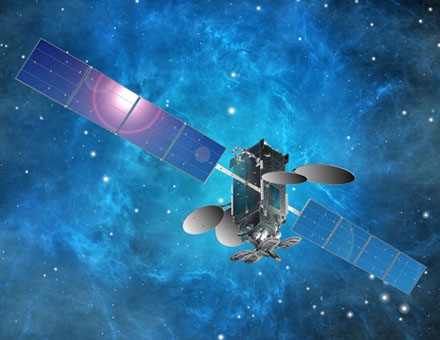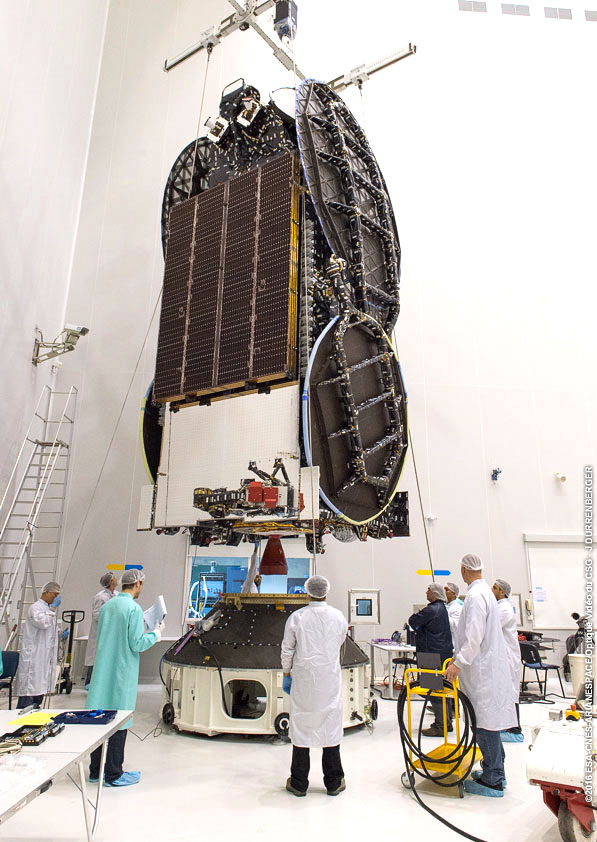EchoStar 18 Satellite

EchoStar 18 is a commercial communications satellite built by Space Systems Loral and operated by Dish Network Corporation (EchoStar). The Direct Broadcasting Satellite will replace the EchoStar 10 spacecraft at 110°West in Geostationary Orbit to deliver broadcasting services to the Continental United States, Alaska, Hawaii, Puerto Rico and Cuba to a customer base of nearly 14 million.
EchoStar 18 is based on SS/L’s flight-proven LS-1300 satellite platform and weighs 6,300 Kilograms at liftoff. The satellite is 8.3 by 3.5 by 2.9 meters in size when in its stowed configuration, it has a dry mass of 3,350 Kilograms.
The EchoStar 18 satellite hosts a high-power communications payload consisting of 78 Ku-Band transponders, 61 of which will be in use while the others are operational spares. 49 of the transponders use 150-Watt Traveling Wave Tube Amplifiers, 24 use 90W TWTAs and the remaining five use 35W TWTAs. The satellite is capable of providing 169 simultaneous active channels, each with a bandwidth of 26 MHz.

EchoStar 18 operates within the 17.3 to 17.8 GHz feeder uplink band and the 12.2-12.7GHz band for downlink. Uplink to the satellite is completed from four feeder link sites spread across the United States.
The spacecraft exclusively uses spot-beam technology for the transmission of the communications carriers to create a system with a high-degree of flexibility.
EchoStar 18 is based on the LS-1300 satellite bus and is the first SS/L satellite to share a launch vehicle with another satellite built by SS/L, BRISat. LS-1300 is a flexible satellite platform that can be flown in different configurations to accommodate different communication payloads with a total power of 5 to 20kW. Using different configurations, LS-1300 satellites can weigh from 2,200 up to 6,700 Kilograms featuring payloads of 12 to 150 transponders. LS-1300 was introduced in the late 1980s, but undergoes constant modifications going through a number of revisions over the years.
As a medium-power configuration of LS-1300, EchoStar 18 uses two solar arrays, each with four panels that deliver an end of mission payload power of 13kW routed to a dedicated system that conditions the satellite’s power bus and controls the state of charge of the vehicle’s batteries. Three-axis stabilization and navigation is accomplished by state of the art navigation sensors and reaction wheels.
The satellite is equipped with a chemical propulsion system for orbit-raising and stationkeeping using a main apogee engine and a series of attitude control thrusters. LS-1300 also provides the option of an additional electric propulsion system, whether this option is exercised for EchoStar 18 is not known.
The satellite is set for an operational service life of at least 15 years, stationed at 109.9 degrees West. In-orbit testing is to be performed at 67.1°W.
